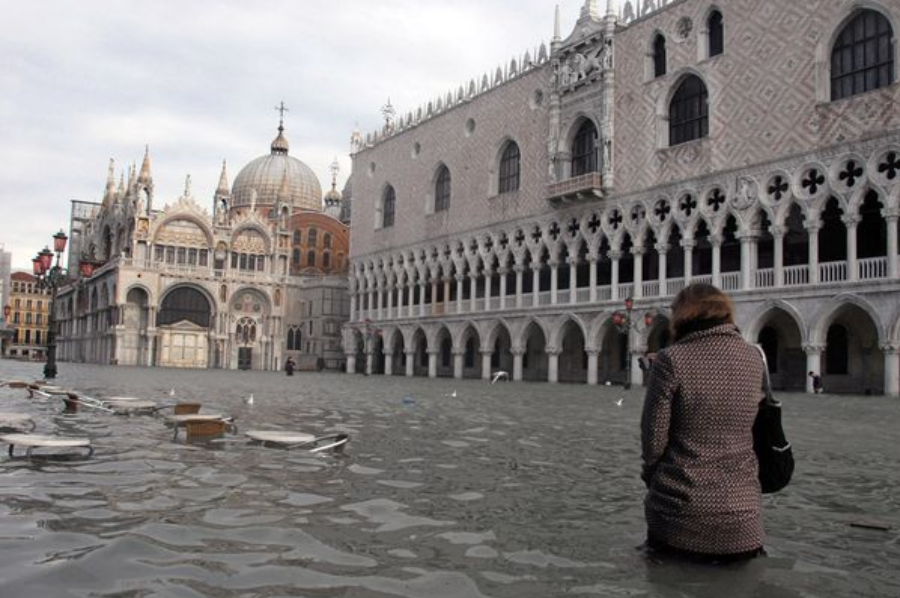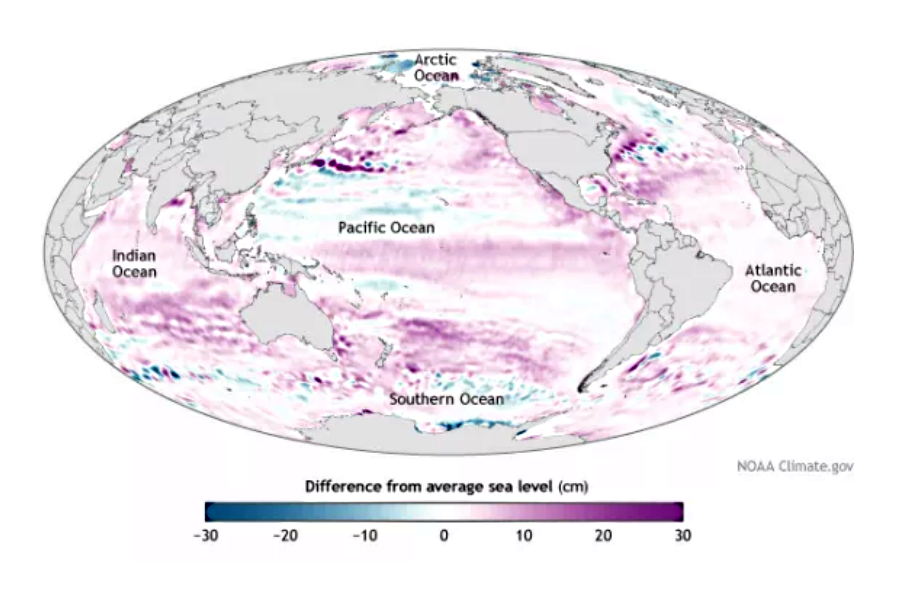A new study suggests that global mean sea level has risen faster between 1993 and 2014 than in previous decades. The sum of all observations results in a yearly increase of 2.2 millimeters in 1994 to 3.3 millimeters in 20014.
Apparently, the most statistically significant increase comes from the melting process of the Greenland ice sheet, which represented only 5 percent of the sea level rate increase in 1993 but more than 25 percent in 2014.

The UN’s Intergovernmental Panel on Climate Change (IPCC) estimates that sea levels could rise by up to 35 inches by the end of the century.
Global sea level rises by water getting warmer, hence taking up more space, and by melting glaciers and ice sheets. When oceans get warmer, they expand somewhat similar to mercury in a thermometer.
There’s no question. Sea levels are rising
According to scientific observations, the melting of Greenland and Antarctica appear to be the primary contributors to sea levels rising. The study mentioned above is the first showing a clear difference in sea level increase spanning decades. It relied on satellite altimeter data obtained over the course of 20 years.
Researchers suggest that until 1993, most of the rise in sea level was due to oceans getting warmer. However, in the following years, the warming factor was surpassed by polar ice sheets melting due to the higher temperatures. If Greenland continued to melt, it could raise global sea levels by about 23 feet. Sea level rise in the 20th century is the greatest it has been in 2,800 years.
“Sea level rises affects coastal communities, increasing temperature can affect crop growth, drought puts stress on water resources, etc. We are currently observing these impacts, and I hope the biggest takeaway is that it’s far past time for meaningful governmental action to address climate change,” stated Chris Harig from the Department of Geosciences at the University of Arizona to Vice News.
Sea level rise can result in coastlines flooding and eroding more easily. Also, small isles and low-altitude coastal population centers are at a high risk, as they could disappear entirely. Past studies show that if sea levels continue to rise, many major coastal cities will have to be abandoned.
In 100 years, our coasts will not be the same
According to the National Oceanic and Atmospheric Administration, data compiled fro m1993 up to 2013 shows that current sea levels compared to mean sea level indicates that sea level rise is not consistent throughout the planet’s oceanic surface.

In New York City, each year the areas in the “100-year flood zone” become larger. The city’s administration learned from Hurricane Sandy the importance of building breakwaters and storm walls to deal with areas vulnerable to flooding, but nothing may save New York from partial flooding unless climate change is slowed.
Several Australian cities will flood due to sea level rise, prompting the government to draw plans for adapting to changing climate. Sydney already has seawalls, but authorities think they are unreliable in the case of floods caused by climate change.
“We are currently observing these impacts. I hope the biggest takeaway is that it’s far past time for meaningful governmental action to address climate change,” added Harig.
Source: Nature
